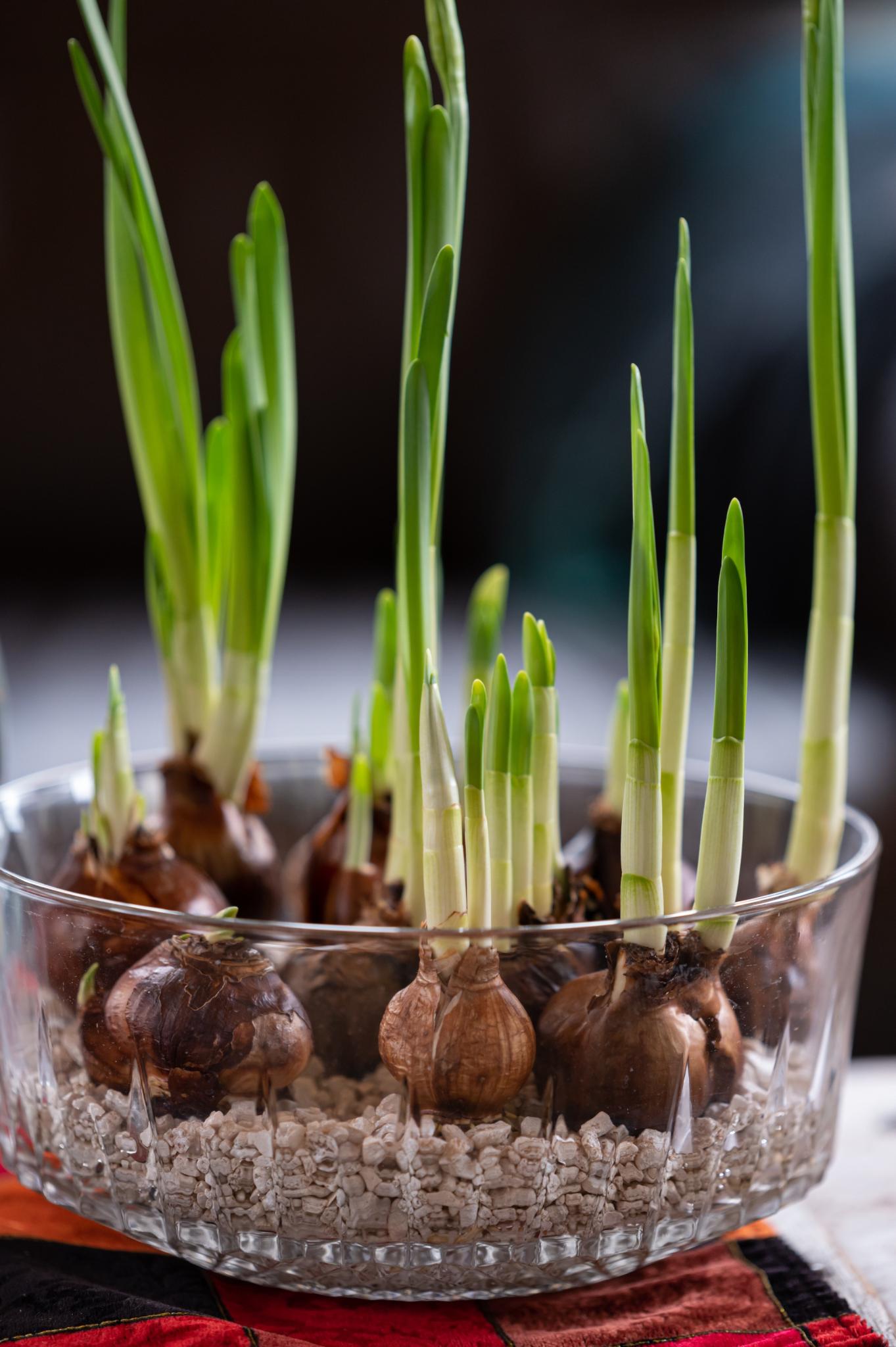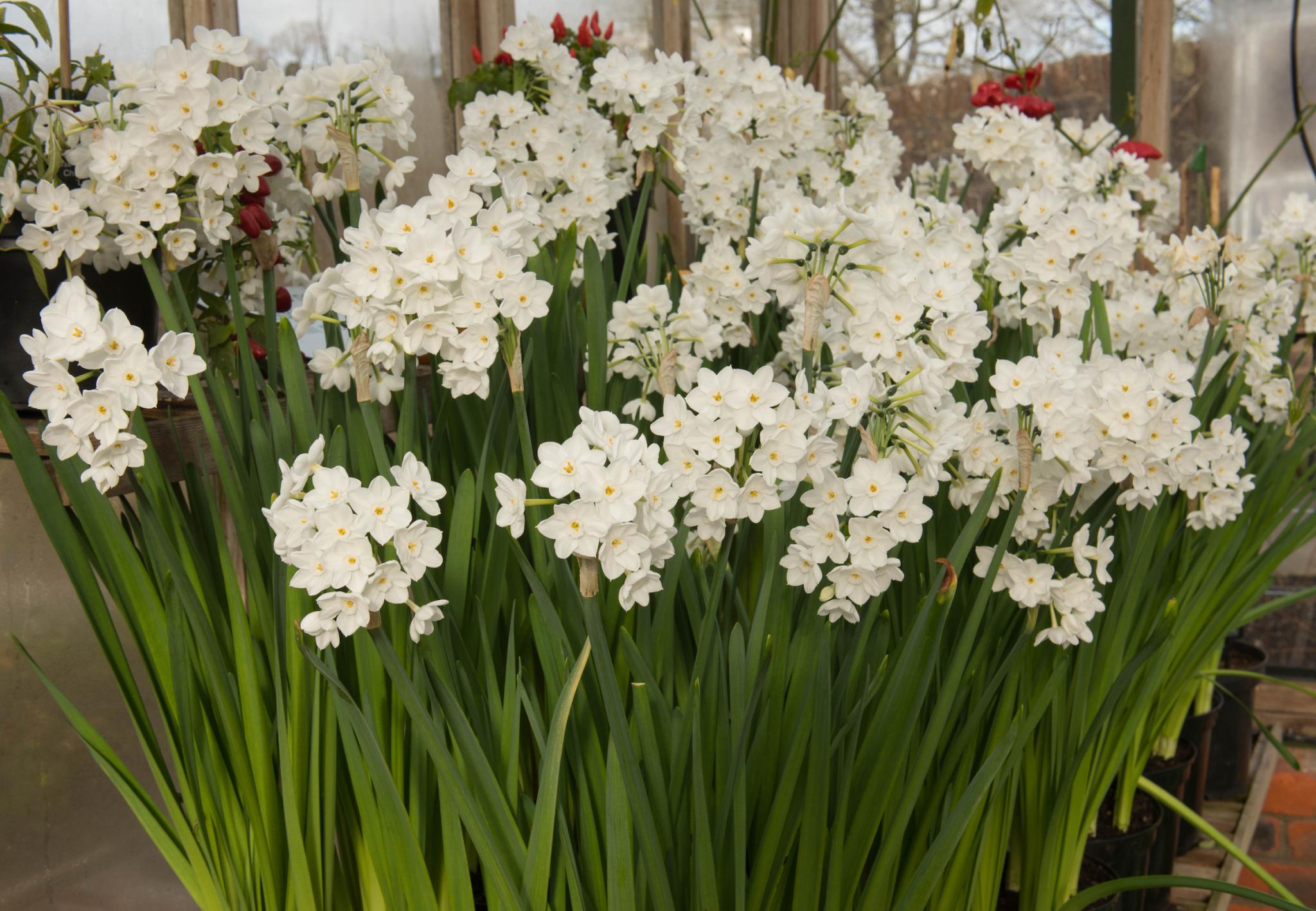Paperwhite narcissus, with their clusters of fragrant, small, white flowers, must be the easiest bulb to force into bloom. In fact, there is really no forcing necessary—just plant, and they'll bloom in three to four weeks! Here's how to do it.
Unlike other spring-flowering bulbs that need a cold period before they blossom, paperwhites are native to warm Mediterranean regions and need no chilling to entice them into bloom. They are members of the genus Narcissus and relatives of the daffodil.
Usually, paperwhite bulbs are grown indoors for flowers during the winter months. They are easy to grow, either in soil or in a dish of pebbles, and make a lovely holiday gift. Inside each paperwhite bulb is everything that’s needed to produce a living bouquet of beautiful flowers!
In frost-free climates (Zones 9 to 11), where temperatures don't go below 20°F, the bulbs may be planted outdoors in late fall (about 6 inches deep and 4 inches apart), and the paperwhites will bloom in late winter.

Here’s how to get your paperwhite bulbs off to a great start:
How to Grow Paperwhites
- Put a 2 to 3-inch layer of pea stone, marbles, or decorative stones in a shallow, watertight container. A clear glass one will give you a good view of the roots' development. If using soil, fill a pot 1/2 full of potting soil or a soil-less mix.
- Place bulbs in pointy-end up. They can be close together, almost touching. No more than 1 inch apart is best.
- Anchor the bulbs with soil or more pebbles, exposing the top third of the bulbs.
- Water those in the soil thoroughly to settle them in and then about once a week after that or as needed to keep them evenly moist. For the pebble-planted ones, add water to the container until it is just below the bottom of the bulbs. If they sit in water, they will rot. Add more water as needed.
- Place them in a dark, cool location, around 50 to 60°F. If kept too warm, they may not flower well, producing spindly plants.
- Watch for rooting. This is easier to see in the pebble-planted ones, especially those in a clear glass container. In the soil-planted pots, look for roots poking out of the pot's drainage holes. It takes about three weeks after planting for roots to form.
- Move the pots of rooted bulbs to a sunny, bright spot with relatively cool temperatures (60-65°F). They should start to bloom 3 to 4 weeks later. If they don't get enough light as they grow, the plants will be leggy and have difficulty holding up their blossoms. As the plants grow, turn the pot every few days to keep the foliage growing straight. Give them some sticks for support.
- Researchers at Cornell University have found that a little alcohol helps keep stems and leaves short but does not harm the flowers.
How Long Do Paperwhites Bloom For?
Paperwhites will bloom for about 14 days and perhaps longer if conditions are favorable. As discussed above, they need bright light but don't like direct light, which will cause them to burn or dry up. Water only when the top 1 inch of their soil feels dry to your touch. Do not fertilize paperwhites. Remove faded flowers, including the petals and swollen seedpod at the base of each flower.

What to Do With Paperwhites After They Bloom
Paperwhites are considered annuals indoors. They are only considered perennials when grown outdoors in Southern California and parts of Texas.
Since these bulbs have given their all to produce the blossoms you just enjoyed, it is recommended that you throw them out or compost them when they are done blooming.
If you live in frost-free zones 9 to 11, you could plant them outside, and, fingers crossed, they might bloom again in a few years, after they have regained their strength.
Indoors, if you plant a few bulbs each month, you'll enjoy fresh flowers all winter!
Enjoy holiday bulbs? Read about growing and caring for amaryllis flowers.












